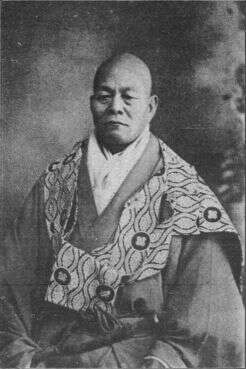Nakahara Nantenbō
From The Right Wiki
You can help expand this article with text translated from the corresponding article in 日本語. (June 2020) Click [show] for important translation instructions.
|
This article includes a list of references, related reading, or external links, but its sources remain unclear because it lacks inline citations. (February 2012) |
Nakahara Nantenbō | |
|---|---|
中原 南天棒 | |
 | |
| Born | April 3, 1839 |
| Died | February 12, 1925 (aged 85) |

Nakahara Nantenbō (中原 南天棒, April 3, 1839 – February 12, 1925), also known as Tōjū Zenchū , Tōshū Zenchū 鄧州全忠, and as Nantenbō Tōjū, was a Japanese Zen Master. In his time known as a fiery reformer[clarification needed], he was also a prolific and accomplished artist. He produced many fine examples of Zen Art and helped bridge the gap between older forms of Zen Buddhist art and its continuation in the 20th century.
See also
References
- Mohr, Michel. 1996. Monastic Tradition and Lay Practice from the Perspective of Nantenbō: A Response of Japanese Zen Buddhism to Modernity. Zen Buddhism Today 12, 63–89.
- Mohr, Michel. 1998. Japanese Zen Schools and the Transition to Meiji: A Plurality of Responses in the Nineteenth Century. Japanese Journal of Religious Studies: Special Issue on Meiji Zen 25, no. 1–2: 167–213.
External links
- Nakahara Nantenbō, by Matthew Welch in The Art of Twentieth-Century Zen, Paintings and Calligraphy by Japanese Masters Eds. Audrey Yoshiko Seo with Stephen Addiss. (c) 1988
- 中原南天棒, Kotobank (in Japanese)